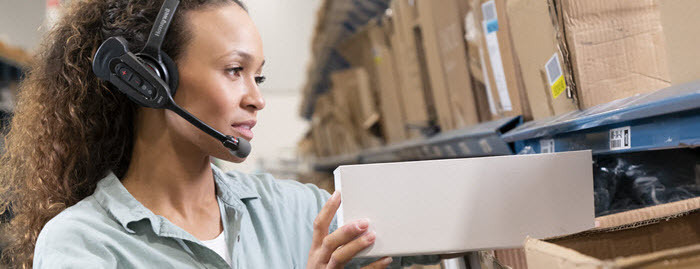Four components for the best order pick strategy
08 Jun 2023
5 min read
An inseparable activity from warehouse management is order picking: the process of collecting goods in a warehouse based on orders on a packing slip. Quite a mouthful, but not a complicated activity. This does not make it less important. On the contrary. Order picking is described as the most labor-intensive and costly activity for almost every warehouse. According to Drury (1988), in some cases it even covers 60% of all work processes in a warehouse.
This means that there is a lot of interest in order picking and that it has a huge impact on your performance. This works both ways of course. A poorly executed picking process forms an unconscious leak in the performance of your entire organization. With increasing work pressure and a tight labor market, this is an activity that has to run smoothly if you want to grow with the sector.
Too big to (order) pick
Therefore, much thought has already been given on the subject. Also, many researchers wrote and published articles about it. And I will already tell you: you will not get an answer on the main question. There is not one best order picking strategy. For this reason, and because of the importance and scope of the subject, I want to discuss the overarching theme of order picking in various blogs. In an extensive series I will pick a specific topic to provide you the right insights. At the end, you might just find the best order pick strategy for yourself.
Every component is efficient
The first topic is about the four components that determine the efficiency of your order picking process. Efficiency always refers to the duration within something is realized, so the four components that F. Caron (2000) mentions, all have time as a measurable quantity: travel time; processing time; administration time and waiting time. No wonder that our customers also indicated in an earlier study that the performance per warehouse employee is one of the most important KPIs for logistics service providers. Below, the components are explained briefly. In later blogs they are explained in more detail.
1. Travel time
In this case, travel time has nothing to do with how long it takes your order pickers to get to work. Although a long traffic jam or a bike ride through a downpour does not really contribute to their productivity, I suppose. No, travel time is defined here as the sum of the travel time ‘within the corridors’ + ‘outside the corridors’. This let you trace back the travel distances between pick locations and pick runs, and start and end points of the pick operation. This way, you know whether your warehouse is organized efficiently for the orders you receive.
2. Processing time
Completing a packing slip consists of many (small) actions. Reading the order, searching for the pick location, picking up the items and processing the serial numbers. These are all included in this component. Are the items easy to find, or: is the warehouse logically arranged? Can the employee handle the items well and are they conveniently packed when they are needed? How long does it take the order picker to adjust the stock in your system, for example with his RF scanner? All actions that add up to dozens of minutes per day per person. I think you can calculate the rest.
3. Administration time
You should not confuse this point with the previous one. The administration time refers to the time for administrative tasks and start-up tasks at the office. In other words, to what extent do those employees ensure that order pickers can work as efficiently as possible? This is where the preparatory and finalizing processes will become clear. Everything that can be taken care of in advance leaves time for picking. The same applies, of course, to what is taken out of your hands after order picking.
4. Waiting time
The last component is about the waiting time between different assignments. Can the order picker always immediately proceed with a next order when he is finished with the first one? Then it is okay. If this is not the case, you will have to find out why not. Think about collecting or depositing collection material, such as a forklift, roll container or other trolley. Or something like the time it costs to collect an order picking list. Whatever it is: you are experiencing the consequences and it is up to you to work it out.
A foundation to build on
Once you have optimized these four components to perfection, your picking process is excellent. In any case, think carefully about your processes. As I said, in the coming period we will go deeper into the components and other in-depth topics. Keep an eye on our blogs and ensure an extremely efficient picking process! Are you already aware that your processes can be improved and do you not want to wait for our content? Please contact us and we are happy to help you.







